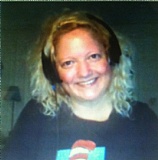Introduction
Whether your interest in Danish stems from heritage, travel, business, or sheer curiosity, understanding numbers is essential for engaging with the language in meaningful ways, from negotiating prices in Copenhagen's bustling markets to appreciating the mathematical beauty that underlies a new linguistic system.
In the following sections, we will unfold the mysteries of the Danish numerical system, starting with the basics and gradually moving towards more complex numbers. Our goal is not just to list numbers but to offer a deeper understanding of their pronunciation, usage, and the patterns that govern their formation. By the end of this guide, you will not only be able to count confidently from 1 to 100 in Danish but also gain insights into common pitfalls and effective strategies for language learning. Let's embark on this numerical adventure with an open mind and enthusiasm, ready to embrace the challenges and joys of learning Danish numbers.
Why Learn Danish Numbers?
The ability to count and understand numbers in Danish goes beyond mere academic exercise; it is a practical skill with real-world applications that can significantly enhance your experience with the Danish language. Whether you're navigating day-to-day situations in Denmark, engaging with Danish media, or simply looking to broaden your linguistic capabilities, numbers play a crucial role. Here, we explore the reasons why learning Danish numbers is not only beneficial but essential for anyone looking to deepen their understanding of the language.
Practical Applications
- Daily Conversations: Numbers are ubiquitous in daily life. From discussing dates and scheduling appointments to sharing phone numbers and addresses, a solid grasp of numbers is indispensable for basic communication in Danish.
- Shopping and Dining: Whether you're buying groceries, shopping for clothes, or dining out, understanding numbers in Danish is essential for transactions. It helps in asking for prices, understanding discounts, and managing bills.
- Travel: For travelers, numbers are vital for catching buses, trains, and flights, and for booking accommodations. Knowing how to count in Danish can also enhance your navigation skills, making it easier to understand distances and directions.
- Cultural Engagement: Numbers often feature in Danish literature, songs, and movies. Understanding them can provide deeper insights into cultural contexts and nuances, enriching your engagement with Danish media.
Cognitive Benefits
- Enhanced Memory: Learning numbers in a new language can improve your memory. The process of memorizing numbers and their structures can boost cognitive flexibility and strengthen memory pathways.
- Improved Math Skills: Engaging with numbers in a second language can also enhance mathematical skills. The mental calculation in a foreign language requires and fosters a higher level of cognitive processing.
- Better Problem-Solving Abilities: Mastering the numeric system of Danish involves understanding patterns and rules, which can improve your problem-solving skills. This cognitive exercise can be applied to various aspects of life and learning.
Linguistic Foundation
- Grammar and Structure: Numbers in Danish, like in many languages, are closely tied to grammar. Learning numbers can help you grasp other aspects of the language, including adjective-noun agreement, pluralization, and sentence structure.
- Building Vocabulary: As you learn numbers, you also expand your vocabulary. This can be a stepping stone to learning other related terms, such as words for money, measurements, and quantities.
- Confidence in Language Learning: Achieving mastery in counting up to 100 in Danish can boost your confidence. It's a measurable achievement that can motivate you to tackle more challenging aspects of the language.
Understanding Danish numbers is more than a linguistic accomplishment; it's a tool that opens up numerous doors to cultural immersion, practical interactions, and cognitive benefits. As we delve deeper into the numbers themselves, keep in mind these applications and advantages, letting them inspire and guide your learning journey.
Basic Danish Numbers (1-20)
Starting with the basics, the numbers 1 through 20 in Danish serve as the building blocks for understanding the entire numerical system. These foundational numbers are crucial for everyday communication, offering a gateway into more complex numerical constructs. Below, we provide a comprehensive overview of these numbers, alongside pronunciation tips and practical applications to integrate them into your Danish language toolkit.
The Numbers 1-20:
Here's a quick list of Danish numbers from 1 to 20, with a phonetic guide to assist in pronunciation:
- En /ɛn/
- To /toʊ/
- Tre /trɛ/
- Fire /ˈfiːɾə/
- Fem /fɛm/
- Seks /sɛks/
- Syv /sʏv/
- Otte /ˈɔtə/
- Ni /niː/
- Ti /tiː/
- Elleve /ˈeləvə/
- Tolv /tɔlv/
- Tretten /ˈtrɛtən/
- Fjorten /ˈfjoʁtən/
- Femten /ˈfɛmtən/
- Seksten /ˈsɛkstən/
- Sytten /ˈsʏtən/
- Atten /ˈɑtən/
- Nitten /ˈnitən/
- Tyve /ˈtyːvə/
Pronunciation Tips:
- Danish pronunciation can be challenging due to its vowel sounds and soft consonants. Pay special attention to the soft "d" (as in "lede"), which can sound more like a soft "l" or a light "th" to English ears.
- The number "en" (1) can change form depending on the gender of the noun it accompanies. It becomes "et" in front of neuter nouns.
- Notice the pattern in the teens (from 13 to 19), where "ten" (ten) is replaced by "ten" at the end of the number, making it easier to remember the sequence.
Integrating Basic Numbers into Daily Use:
- Practice with Time: Use numbers 1-20 to tell time in Danish. For instance, "Klokken er tre" (It's three o'clock).
- Counting Objects: Practice counting items in Danish, whether it's fruits in a basket or books on a shelf. This will help solidify your grasp of the numbers and their pronunciation.
- Simple Transactions: When shopping, try to understand prices in Danish or even attempt to speak them yourself. This real-life application reinforces learning and builds confidence.
Common Usage Scenarios:
- Social Interactions: Numbers are often used in social settings, from discussing ages to planning meetings. Being comfortable with these basic numbers will make such interactions smoother.
- Understanding Addresses: Knowing numbers helps in navigating Danish cities, understanding street numbers, and even floor levels in buildings.
- Cuisine and Dining: Danish cuisine often involves numbers, whether it's the number of courses in a meal or the table number at a restaurant.
Mastering the numbers 1 through 20 in Danish marks the first step in your journey to fluency. These numbers are not just symbols but keys that unlock various aspects of Danish culture and daily life. With practice and application, you'll find these numbers becoming a natural part of your Danish vocabulary, paving the way for more complex numerical and linguistic achievements.
Tackling Tens (20-100 by tens)
After mastering the basics, the next step in your numerical journey is understanding the tens in Danish, from 20 to 100. This part of the numerical system introduces a pattern that, once grasped, makes dealing with larger numbers significantly easier. Below, we explore these tens, provide insights into their formation and pronunciation, and highlight their practical applications.
Understanding Danish Tens:
The structure of tens in Danish is logical and follows a consistent pattern after 20. Here’s a breakdown of each ten up to 100, with pronunciation guides to aid your learning:
- 20: Tyve /ˈtyːvə/
- 30: Tredive /ˈtʁeðiːvə/
- 40: Fyrre /ˈfyrə/
- 50: Halvtreds /ˈhalvtʁɛs/ (short for "halvtred-sinds-tyve," meaning "half third times twenty")
- 60: Tres /ˈtʁɛs/ (short for "tresindstyve," meaning "three times twenty")
- 70: Halvfjerds /ˈhalvˌfjæɐ̯ðs/ (short for "halvfjerdsinds-tyve," meaning "half fourth times twenty")
- 80: Firs /ˈfiɐ̯s/ (short for "firsindstyve," meaning "four times twenty")
- 90: Halvfems /ˈhalvˌfɛms/ (short for "halvfemsinds-tyve," meaning "half fifth times twenty")
- 100: Hundrede /ˈhunˀdʁəðə/
Pronunciation Tips:
- The Danish language features vowel sounds and soft consonants that might not have direct equivalents in English, making careful listening and practice essential for correct pronunciation.
- Pay attention to the "r" sound, which can be quite soft in Danish, especially in numbers like "fyrre" (40) and "firs" (80).
- Note the unique way Danish forms compound numbers, particularly from 50 onwards, based on a vigesimal system (counting in twenties), which might initially seem complex but follows a logical pattern.
Practical Applications:
Budgeting and Shopping: Understanding tens can help you navigate prices, especially when dealing with items or services priced in the tens or hundreds. Whether you're at a flea market in Copenhagen or reviewing a restaurant menu, these numbers are invaluable.
Age and Milestones: Discussing age, anniversaries, or significant milestones often involves tens. Knowing these numbers allows for clearer communication about such events.
Historical Dates and Timelines: When learning about Danish history or discussing dates, tens are frequently used. This knowledge aids in understanding historical contexts and timelines more effectively.
Common Usage Scenarios:
- Travel and Navigation: Distances and speeds in Denmark are metric, so understanding tens and hundreds is essential for interpreting road signs and navigating effectively.
- Sports and Fitness: Whether you're watching a football match or discussing fitness goals, tens are commonly used to discuss points, distances, and times.
- Events and Planning: When planning or attending events, numbers in the tens and hundreds are often used to discuss dates, times, locations, and capacities.
Grasping the pattern and pronunciation of tens from 20 to 100 in Danish not only broadens your numerical understanding but also enhances your overall language proficiency. This knowledge is not merely academic; it’s a practical tool that will serve you in a variety of everyday situations, from casual conversations to more formal settings. As you become more comfortable with these numbers, you'll find that they form the basis for more complex numerical expressions, making the Danish language more accessible and enjoyable to navigate.
The Numbers 21-99: Understanding the Pattern
Having established a foundation with the basics and the tens, the next logical step is navigating the numbers 21 through 99 in Danish. This range is where the Danish numbering system reveals its unique structure, combining the elements we've learned so far in interesting ways. Understanding how to form these numbers not only deepens your grasp of Danish but also equips you with the numerical fluency needed for a wide range of everyday situations.
Forming Numbers 21-99 in Danish:
Danish forms numbers in the 21-99 range by essentially "stacking" numbers on top of each other, following a base-20 system for numbers beyond 50. This can be a bit challenging for learners initially, as it differs from the base-10 system used in many other languages. Here’s a guide to understanding and forming these numbers:
- 21-29: These numbers are formed by starting with "enog" (and one) followed by the tens place. For example, 21 is "enogtyve" (one and twenty), 22 is "toogtyve" (two and twenty), and so forth.
- 30-99: The pattern continues similarly for numbers beyond 29, with the unit number placed before the tens and connected by "og" (and). For instance, 34 is "fireogtredive" (four and thirty), and 58 is "otteoghalvtreds" (eight and fifty).
Special Note on 50-99:
- 50-99: Pay attention to the historical vigesimal (base-20) influence in Danish for numbers 50-90. For example, 50 (halvtreds) is short for "halvtredsindstyve" (half third times twenty), indicating a subtraction of 10 from 3 times 20 (60). This pattern continues with 60 (tres), 70 (halvfjerds), 80 (firs), and 90 (halvfems).
Pronunciation Tips:
- "Og" Connection: The "og" (and) connector is key to pronouncing numbers correctly. Practice the fluid transition between the unit and the tens place.
- Stress Patterns: In Danish, the primary stress tends to fall on the first syllable of the word, including numbers. Paying attention to stress patterns can significantly improve your pronunciation.
- Listening Practice: Given the unique structure of Danish numbers, listening to native speakers and practicing along is invaluable. Utilize language learning apps, Danish TV shows, or online videos to hone your pronunciation skills.
Practical Uses and Applications:
- Shopping and Bargaining: When dealing with prices, especially at markets or in casual buying settings, being able to understand and communicate numbers clearly is crucial.
- Time and Scheduling: Discussing dates, planning meetings, or setting appointments often involves numbers within this range. Clear communication here can prevent misunderstandings.
- Statistics and Data: Whether you're reading news articles, following sports, or engaging in academic discussions, a good grasp of numbers allows you to understand and participate in conversations involving statistics and data.
Integrating Numbers into Practice:
- Role-playing Exercises: Practice scenarios like shopping, asking for directions, or making reservations in Danish. These role-plays can help solidify your understanding of numbers in a practical context.
- Numbers Challenge: Set daily challenges for yourself to count or recognize numbers in Danish, whether through flashcards, apps, or labeling items around your home with their Danish numbers.
- Engage with Danish Media: Listening to Danish radio, watching Danish TV shows, or following Danish social media accounts can provide exposure to numbers used in a natural context, enhancing both your listening comprehension and pronunciation skills.
Mastering the numbers 21-99 in Danish requires patience and practice, especially given the unique counting system. However, by breaking down the numbers into manageable chunks, focusing on pronunciation, and applying your knowledge in practical settings, you'll find that these numbers become less daunting and more a natural part of your Danish language proficiency.
Pronunciation Guide: Mastering Danish Numbers
Pronunciation is a critical aspect of language learning, and this holds especially true when mastering numbers in Danish. Correct pronunciation not only facilitates clear communication but also aids in understanding when listening to native speakers. This section offers a focused guide on pronouncing Danish numbers, highlighting common challenges and providing tips to improve your skills.
Key Pronunciation Tips for Danish Numbers:
- Soft D: The Danish "soft d" (found in "fem" [five] and "syv" [seven]) is pronounced somewhat like a soft "th" in English, but with the tongue positioned closer to the teeth. It's a sound that doesn't exist in many languages, requiring practice to master.
- Stød: Some Danish numbers feature the "stød," a glottal stop or vocalized catch in the throat, similar to the cockney pronunciation of "butter" in English. It can be heard in numbers like "seks" (six) and "nitten" (nineteen).
- Vowel Sounds: Danish has more vowel sounds than English, and getting these right is crucial for accurate pronunciation. For example, the "e" in "ti" (ten) and "tyve" (twenty) is pronounced with a more open mouth than the English "e."
- Rhythm and Stress: Danish pronunciation often emphasizes the first syllable of a word, including numbers. Practice speaking numbers with a focus on stressing the initial syllable to get the rhythm right.
Common Pronunciation Challenges and Solutions:
- Numbers with "og" (and): For numbers like "enogtyve" (21), ensuring fluidity when pronouncing the "og" conjunction can be tricky. Solution: Slow down your speech and practice the transition between words until it feels natural.
- The "r" Sound: The Danish "r" is more guttural than in English and can be difficult for learners. It's particularly notable in numbers like "fyrre" (40). Solution: Listen to native speakers and try to imitate the sound; practicing with a Danish speaker can provide valuable feedback.
- Long Compound Numbers: Numbers such as "femoghalvfems" (95) can seem daunting due to their length and compound structure. Solution: Break them down into their constituent parts ("fem" + "og" + "halvfems") and practice each segment before combining them.
Tools and Resources for Practice:
- Language Learning Apps: Many apps offer pronunciation practice with feedback from native speakers or AI, helping to refine your accent and pronunciation.
- Online Videos and Tutorials: YouTube and language learning websites are rich sources of pronunciation guides, including specific videos focused on Danish numbers.
- Audio Books and Podcasts: Listening to Danish audio books or podcasts can immerse you in the sound of the language, improving your pronunciation and listening skills.
Engaging with Native Speakers:
- Language Exchange: Partner with a native Danish speaker who is learning your language. This mutual exchange can offer personalized feedback on your pronunciation.
- Danish Language Meetups: Participating in language meetups or Danish cultural events can provide a relaxed environment to practice speaking and listening to Danish numbers in context.
Regular Practice Makes Perfect:
Consistent practice is key to mastering Danish number pronunciation. Dedicate time each day to pronounce numbers, listen to native speakers, and engage in speaking exercises. Remember, overcoming pronunciation challenges is a gradual process, and persistence will lead to noticeable improvements.
By focusing on these pronunciation aspects, you'll not only become more confident in your ability to communicate numbers in Danish but also enhance your overall pronunciation skills in the language. As you progress, you'll find that the nuances of Danish pronunciation become more familiar, making your spoken Danish more natural and comprehensible to native speakers.
Conclusion
Mastering the Danish numerical system is a journey that goes beyond memorizing sequences of numbers; it's an integral part of immersing yourself in the Danish language and culture. From the foundational numbers 1 through 20, through the logical patterns of the tens, and into the complexities of numbers 21 to 99, each step brings you closer to fluency and a deeper understanding of Danish ways of communication. Alongside these achievements, the focus on pronunciation ensures that you not only recognize numbers on paper but can also use them confidently in conversation, enhancing both your speaking and listening skills.
The journey through Danish numbers is marked by unique challenges, from the vigesimal counting system to the nuanced pronunciations that distinguish Danish from other languages. Yet, with the strategies and insights provided in this guide, these challenges become manageable, transforming into milestones of progress on your language learning path.
As you continue to practice and apply these numbers in real-life scenarios—be it in shopping, navigating, or engaging in conversations—you'll find that your efforts enrich your interactions and deepen your appreciation for Danish culture. The practical applications of numbers in daily life are vast, making this knowledge not just a linguistic achievement but a tool for seamless integration into Danish society or any context where the Danish language is used.
Remember, language learning is a cumulative process that benefits greatly from consistency and real-world application. Encourage yourself to practice regularly, seek out conversations with native speakers, and immerse yourself in Danish media. Each step, no matter how small, is a step forward in your language learning journey.















